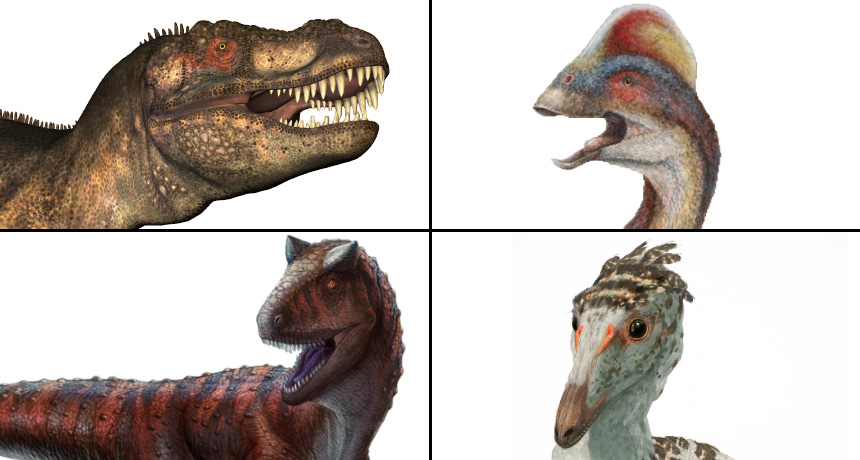Bony head ornaments signal some supersized dinosaurs
Accents like bumps and horns on theropod skulls linked to evolution of bigger bodies

WORK IT Theropod dinosaurs display a wide variety of bony ornaments protruding from their skulls, including bumps (Tyrannosaurus rex, top left), horns (Carnotaurus sastrei, bottom left) and crests (Anzu wyliei, top right). But relatives of modern birds (Troodon formosus, bottom right) instead donned feathers similar to those used by modern birds for flight. Dinosaurs are not to scale.
Clockwise from top left: Elenarts/shutterstock; Mark Klingler/Carnegie Museum of Natural History; Jason Brougham/AMNH; Lida Xing and Yi Liu







